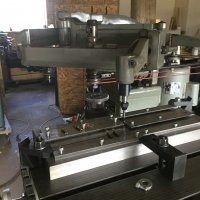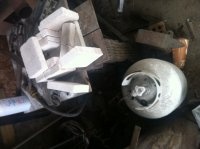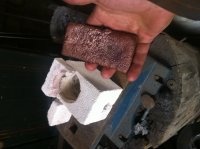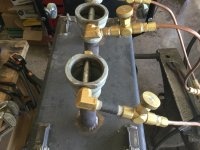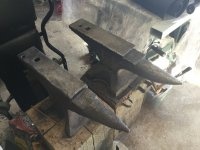Howdy,
No my name is not Tubal Cane or Robin Hood. But I do like machining and archery a lot. So much so that both are pretty passionate hobbies of mine. I have been involved in archery for about 45 years and was introduced to machining/metal working in High School. Never had any machines until about 3-4 years ago - other than the common hand tools/power tools used to rebuild a house or work on vehicles.
Then I needed to make this special bushing for one of my bows: SAE id with Metric od. Could not find anything off the shelve so I bought a lathe to make one... The rest is pretty much history.
Some of the equipment that "plugs up" my small shop includes: a second (bigger) lathe, milling machine, shaper, surface grinder, tool & cutter grinder, pantograph, metal band saw, welder, and tons of tooling.
I make my living operating machines that go really fast and far. So I do very much appreciate what the pro machinist/metal works do every day; it helps me get home safely. A big Thank You to all of them out there!
Cheers, Rudy
No my name is not Tubal Cane or Robin Hood. But I do like machining and archery a lot. So much so that both are pretty passionate hobbies of mine. I have been involved in archery for about 45 years and was introduced to machining/metal working in High School. Never had any machines until about 3-4 years ago - other than the common hand tools/power tools used to rebuild a house or work on vehicles.
Then I needed to make this special bushing for one of my bows: SAE id with Metric od. Could not find anything off the shelve so I bought a lathe to make one... The rest is pretty much history.
Some of the equipment that "plugs up" my small shop includes: a second (bigger) lathe, milling machine, shaper, surface grinder, tool & cutter grinder, pantograph, metal band saw, welder, and tons of tooling.
I make my living operating machines that go really fast and far. So I do very much appreciate what the pro machinist/metal works do every day; it helps me get home safely. A big Thank You to all of them out there!
Cheers, Rudy


